Pentagon war planners can envision a conflict with China starting in any number of ways.
For example, they fear a scenario that might involve a mass of Chinese military forces posturing along China’s coast near Taiwan and the aggressive reorientation of Chinese missile systems that would start setting off alarms in Washington, D.C.
Top military leaders in Indo-Pacific Command would brace for reports of cyber attacks, satellites shutting down, vessels crowding and swarming various ships and ports across the South China Sea.
More than a dozen experts contacted by Military Times described how this hypothetical nightmare could erupt fully, perhaps as Chinese missiles start hitting targets in Taiwan. A conflict could spin out of control quickly as sensors across the region light up with simultaneous events, stretching the United States and its allies in every imaginable domain all at once.
A Pentagon annual report on China released Tuesday noted the military capabilities that the United States and its allies might have to counter, should such a scenario occur.
RELATED
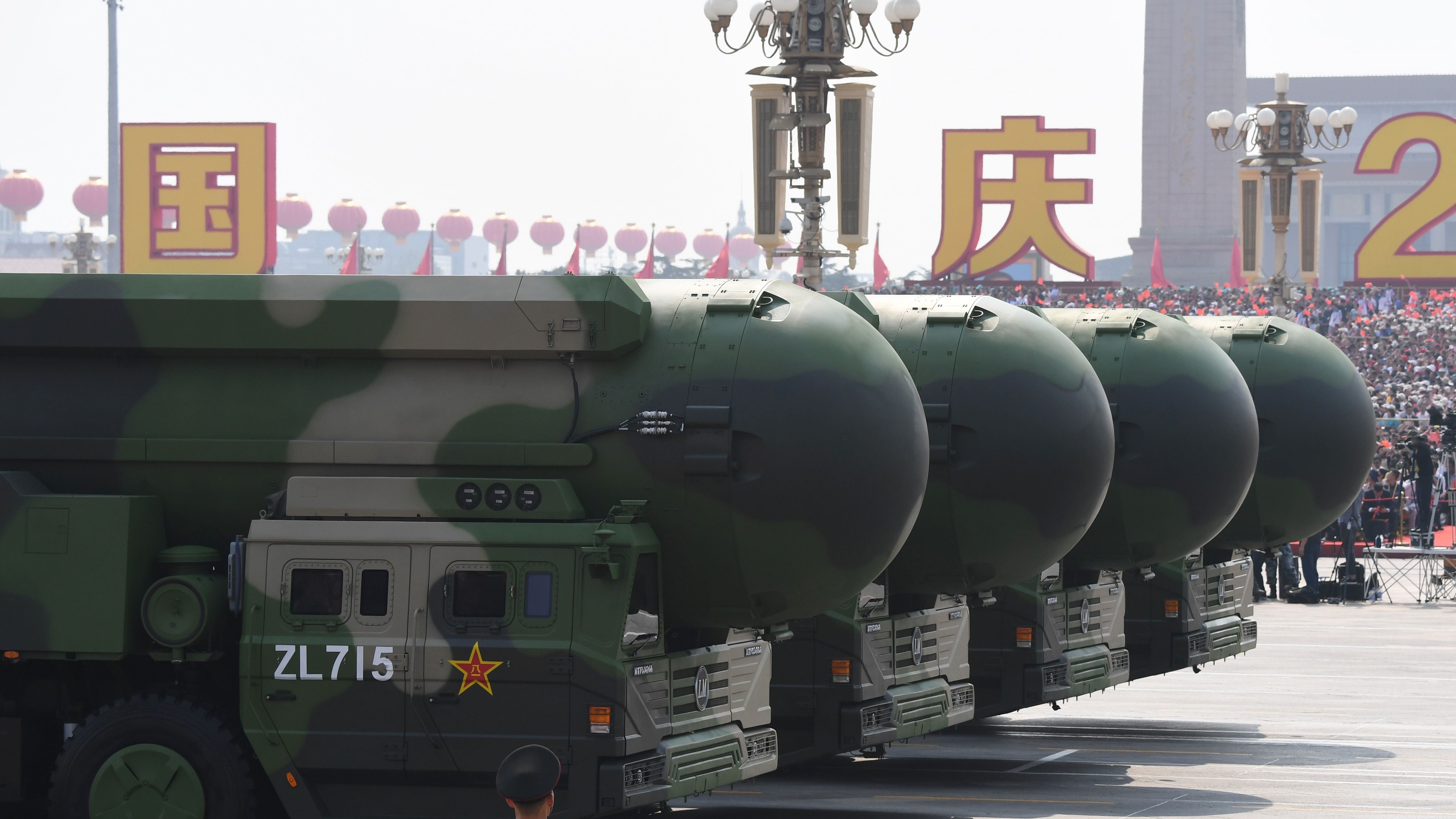
Among China’s assets is the world’s largest navy, with a battle force of 350 ships that includes 130 major surface combatants. By comparison, the U.S. Navy has 296 deployable ships. China’s ground-based missiles have a range of 500km range, compared to the 300-km range for U.S. ground-based missiles in theater.
And if the United States does strike, it will face the world’s largest array of advanced long-range, surface-to-air systems, according to the report.
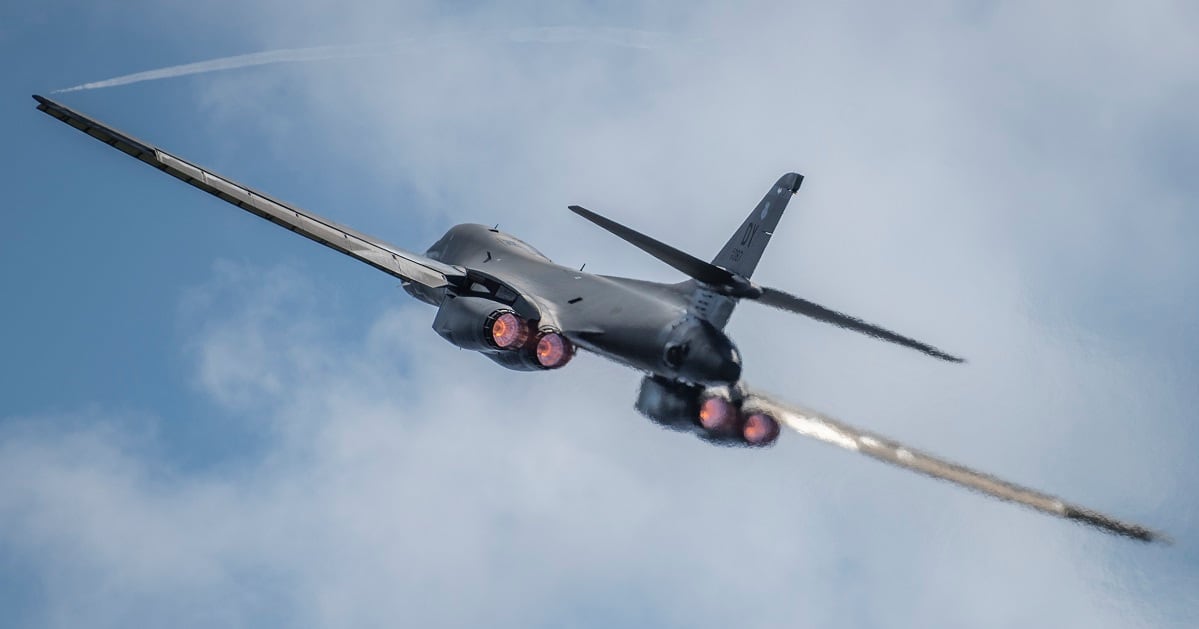
China and America at war?
It’s a global contingency that Pentagon planners are now studying more than ever before, as both the U.S. and Chinese military are setting up more tripwires across the Pacific Rim that could draw the world’s two largest powers into open conflict.
During a recent trip to Hawaii, Defense Secretary Mark Esper outlined the rising tension between the U.S. and China as the latter looks to extend its military might outside its borders.
The Chinese military “continues to pursue an aggressive modernization plan to achieve a world-class military by the middle of the century,” he said Aug. 26 at the Asia-Pacific Center for Security Studies in Honolulu. “This will undoubtedly embolden the PLA’s provocative behavior in the South and East China seas, and anywhere else the Chinese government has deemed critical to its interests.”
Friction across the region is ripe for escalation — from the long-standing Chinese threats against Taiwan to the the U.S. freedom-of-navigation operations in the South and East China seas that so irritate the Chinese. And, of course, those seas are heavily trafficked by ships, both military and commercial, adding more potential for confrontations. Other triggers could include China’s land claims across the region, its growing economic might, shifting regional alliances and the ever-present tensions on the Korean peninsula. There’re also growing concerns about cyber warfare and space.
China’s moves are so bold that the Pentagon has reoriented its entire worldview. The 2018 National Defense Strategy aims to shore up not only troops and weapons to deter a fight in the Pacific, but also to expand its network of allies in the region.
This network expansion serves several purposes: to increase the total number of assets available to deploy against China, if need be; to explore more forward-basing opportunities that would spread U.S. troops now concentrated in South Korea and Japan farther south and west; and to ensure that, at a basic level, those countries side with the U.S., rather than China, in any possible conflict.
RELATED
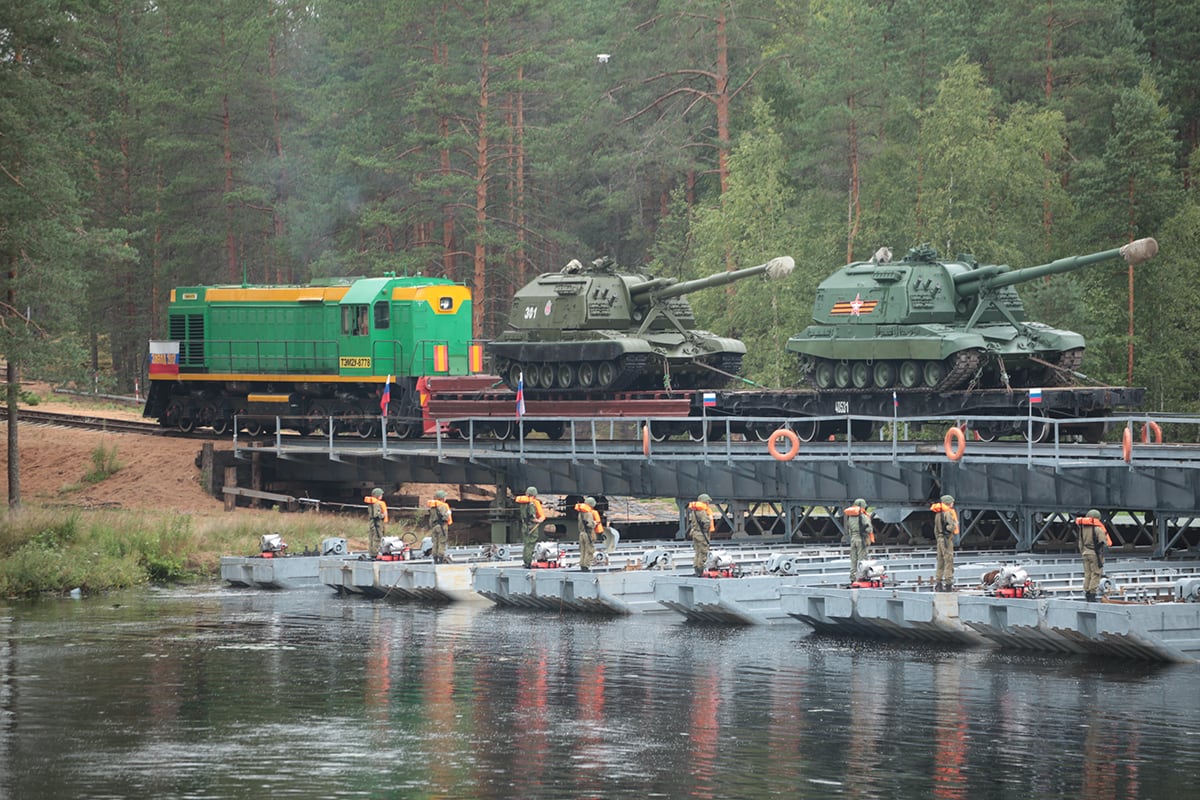
Military Times interviewed more than a dozen sources — both on the record and on background — and reviewed dozens of publicly available analyses on scenarios that could lead to live combat between the two nations.
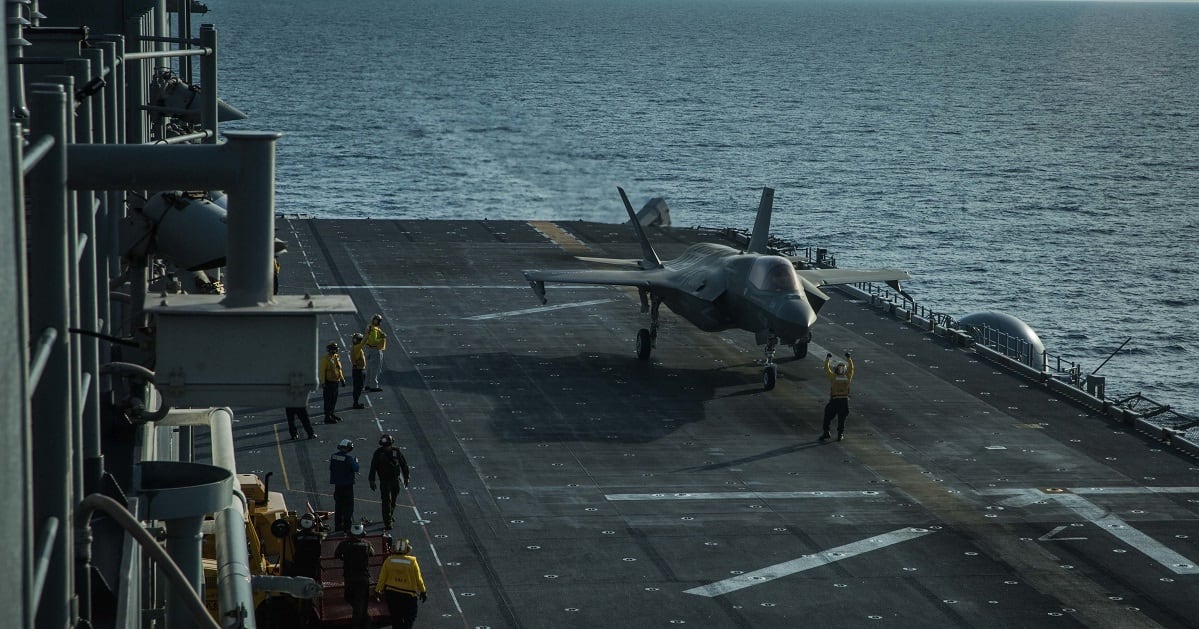
Experts roundly agreed that immediate conflict remains unlikely, given the huge costs in lives and treasure. Moreover, the nuclear weapons on both sides certainly serve to make leaders more cautious. But within the next decade or less, straining relations coupled with increased Chinese military capability could bring events to the brink.
The Air Force’s new chief of staff, Gen. Charles “CQ” Brown, on Monday warned that the next war — a war with a peer adversary like China or Russia — is likely to be highly contested and could see “combat attrition rates and risks — that are more akin to the World War II era than the uncontested environment to which we have become accustomed” since the Gulf War.
The U.S. risks losing such a war if its military does not adjust to this new reality,” said Brown, who until recently served as head of Pacific Air Forces.
There’s also the risk that mistakes could start a conflict without strategic intention on either side.
“I don’t think the South China Sea would start a war, but I do think there’s a risk of miscalculation that could result in localized hostilities,” said Blake Herzinger, a civilian Indo-Pacific defense policy specialist and Naval Reserve officer based in Singapore. “I think both countries would act quickly to try and de-escalate if there were an exchange of fire in the [South China Sea].”
While a real military confrontation always looms, many experts believe that China would rather conduct political and economic warfare to undermine the U.S. and further its strategic objectives.
Unlike most other U.S. adversaries, the rivalry with China is a sprawling global competition that has countless non-military aspects, as China seeks to dominate regions politically and economically, create economic conditions favorable to China alone, and displace democratic institutions.
Like the Cold War of the 20th century, the geostrategic battle between the U.S and China may intensify without a direct peer-to-peer war.
The most likely situations to spark military conflict, and ones that have been war-gamed an unknown number of times, are an escalation of Chinese military aggression in the South China Sea and an attack, harassment or even invasion of Taiwan.
Taiwan
In some ways, the U.S. and China are already at war, said Rick Lamb, a retired Army Special Forces command sergeant major.
“And in a lot of instances, it is really this competition that you see,” he said. “It goes into confrontation, like they build the islands. And then the next step is conflict, but they always keep this confrontation, this conflict, this competition below the threshold of war.”
The recent Pentagon China report contains sections dedicated to both Taiwan and the Taiwan Strait. Taiwan is being outspent by China in military acquisitions, the report noted, and has reoriented to asymmetrical assets specifically to counter Chinese capabilities. But the island would face an onslaught in the event of any real aggression from China.
The entire eastern theater command of China’s military is aimed at Taiwan and Japan. And its army “continues to enhance its readiness to prevent Taiwan independence and execute an invasion if necessary,” according to the report.
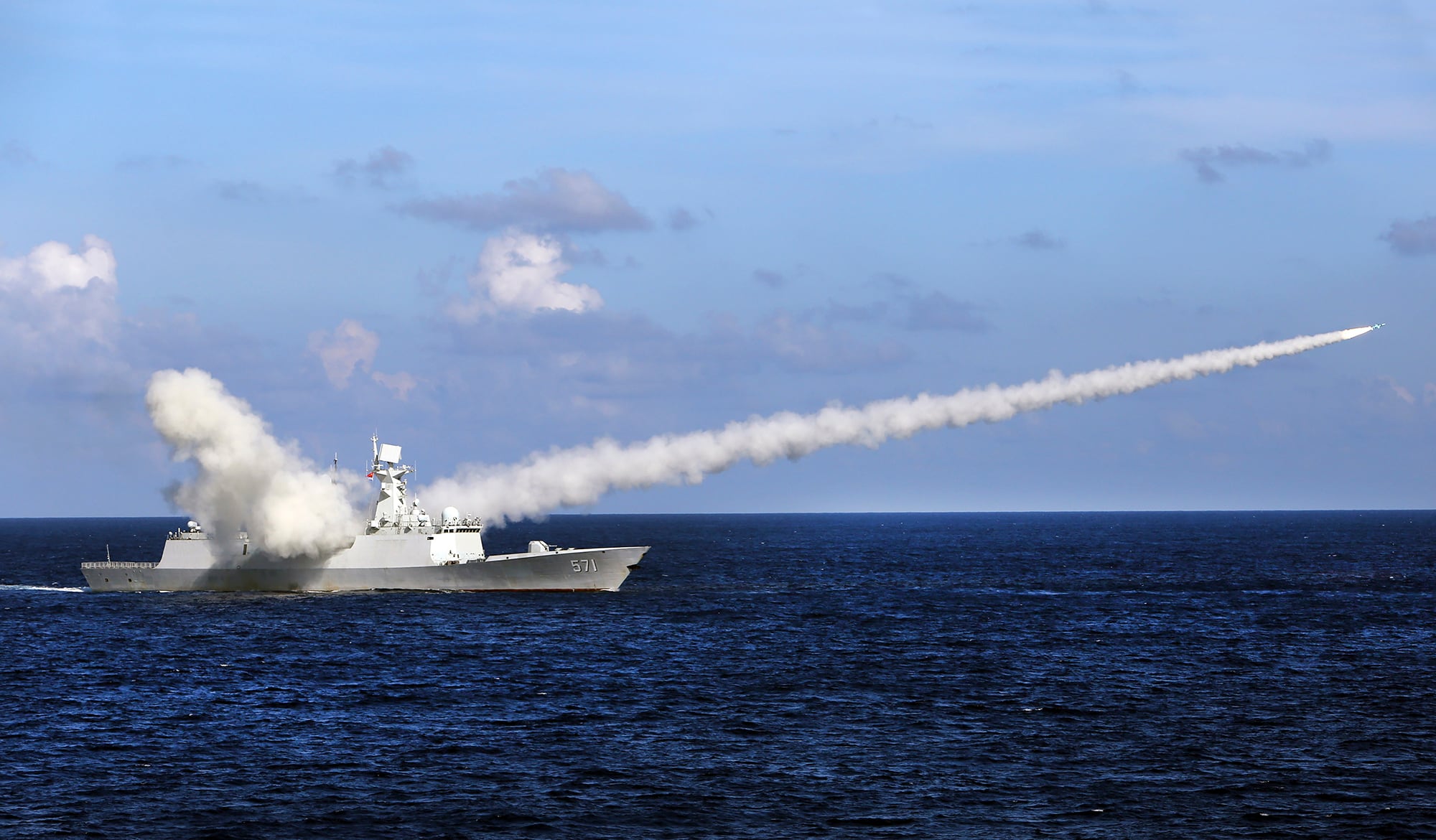
That command contains three group armies, two marine brigades, two air force bases and one missile base, not including the rest of the nation’s assets that could be shuttled through the countryside to provide a deeper magazine, according to the report.
While much of China’s foreign policy and expansionist work happens in the economic and political realms, there are military aspects to those efforts, especially with Taiwan.
“Although Beijing would prefer to avoid a military confrontation over Taiwan, it has never taken the military card off the table,” according to a Stratfor report released in June. “The pace of China’s military developments [has] far exceeded Taiwan’s, and the balance has clearly tilted in favor of China, including even in several scenarios where the United States intervenes in a cross-strait conflict.”
But the price in Chinese troops and equipment, not to mention the global economic and political fallout, wouldn’t necessarily be worth the risk.
RELATED
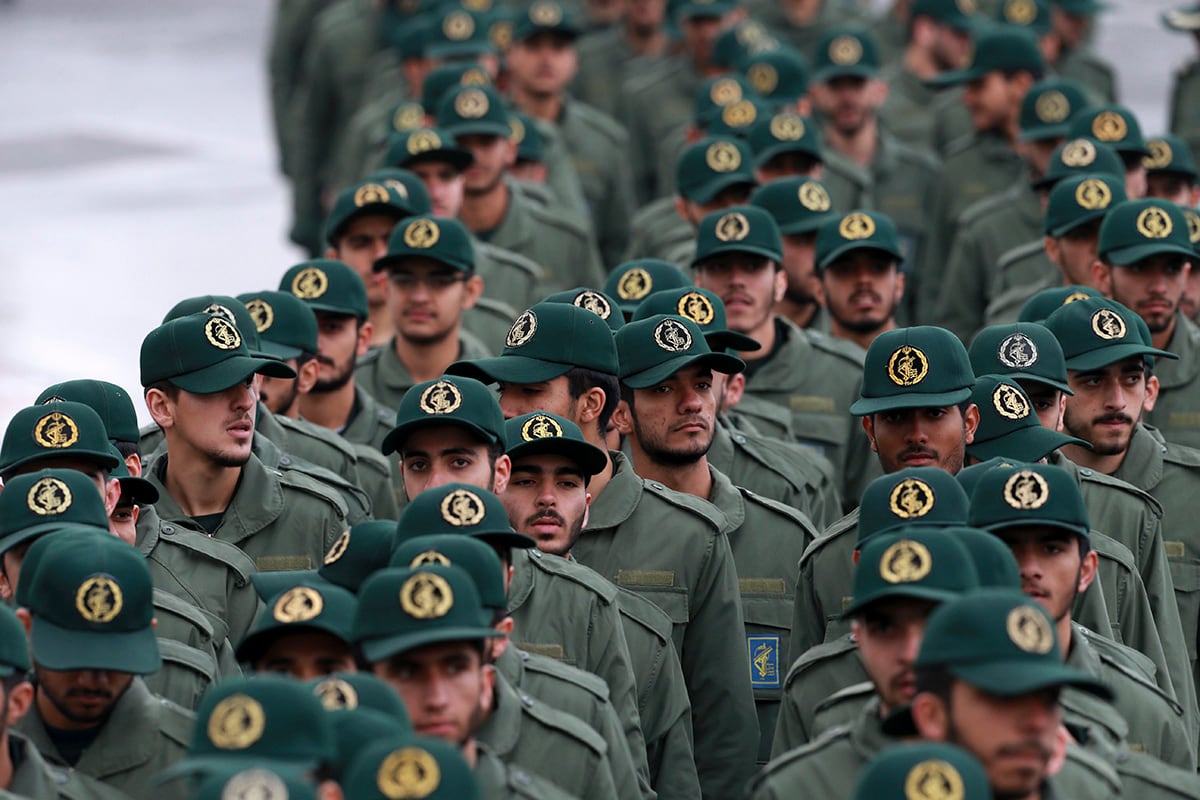
“That does not mean, however, that China is not actively preparing the battleground, both in the political realm to demonstrate the futility of Taiwanese independence, and as a concrete way to increase the likelihood of victory if there is a shift to open hostilities,” the report noted.
Retired Army Lt. Col. Dennis Blasko, a former Army attaché to Beijing and Hong Kong, told Military Times that many analysts have ignored recent developments in the Chinese military.
While missile, naval, cyber and electronic warfare capabilities have received most attention, “vast improvements” in China’s air assault and special operations forces over the past 15 years go unmentioned, he said.
And a lot of attention is paid to the mass, or total numbers of forces, that China can put together.
That’s not as big an advantage as it seems, Blasko said. Mostly, that’s because “its overwhelming numbers can’t all fit into the Taiwan front or in the airspace surrounding Taiwan. … It’s more about how these forces are concentrated and employed, and the commanders and staffs that lead them, than sheer numbers.”
RELATED
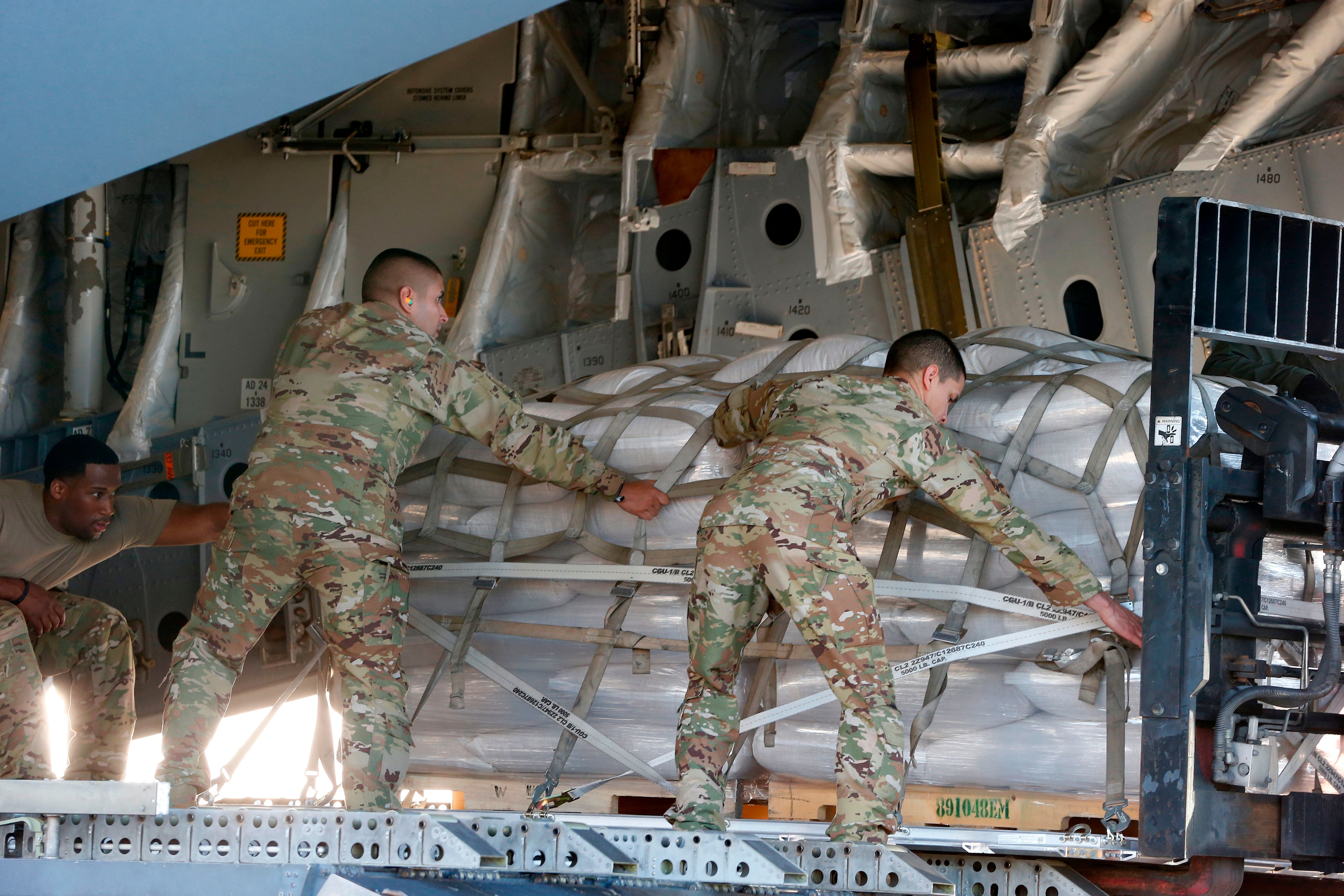
China has also built enough artificial islands in the South China Sea to make a kind of “defensive ring” around Taiwan, according to experts.
A recent war game, one of many that have been conducted involving a Taiwan conflict, showed “staggering casualties” and, should China gain a foothold on the island, an “Iwo Jima”-like situation for the United States to overcome, according to a report by Real Clear Investigations.
An initial U.S. response would include air defenses using Patriot missiles and submarines in the area, which have worked brilliantly for many past conflicts.
This time, though, the volume of fire that China would launch would overwhelm the defenses available. Even if the Patriot batteries took out all they could, hundreds of missiles would still hit Taiwan.
Following the missile attack, Real Clear reported from the war game, an estimated 15 to 20 Chinese military landings from all directions would hit the island. They could seize beachheads and airports, locking down defensive positions quickly to deny access from Allied forces.
“And once that happens we’d face an Iwo Jima situation," Rand Corp. analyst David A. Ochmanek, told Real Clear.
The sheer mass of attacks and materials that China could bring to the fight would be hard to handle, said Dean Cheng, a China expert for the Heritage Foundation.
“What is going to take down the second wave of enemy helicopters, the third wave of Chinese ground attack craft?” Cheng told Military Times. “What happens to our side when we’re not getting hit by a mortar battery but by an artillery division?”
As far as U.S. ground forces in Taiwan, their job would get complicated quickly. Just getting them onto the island in the first place would be difficult.
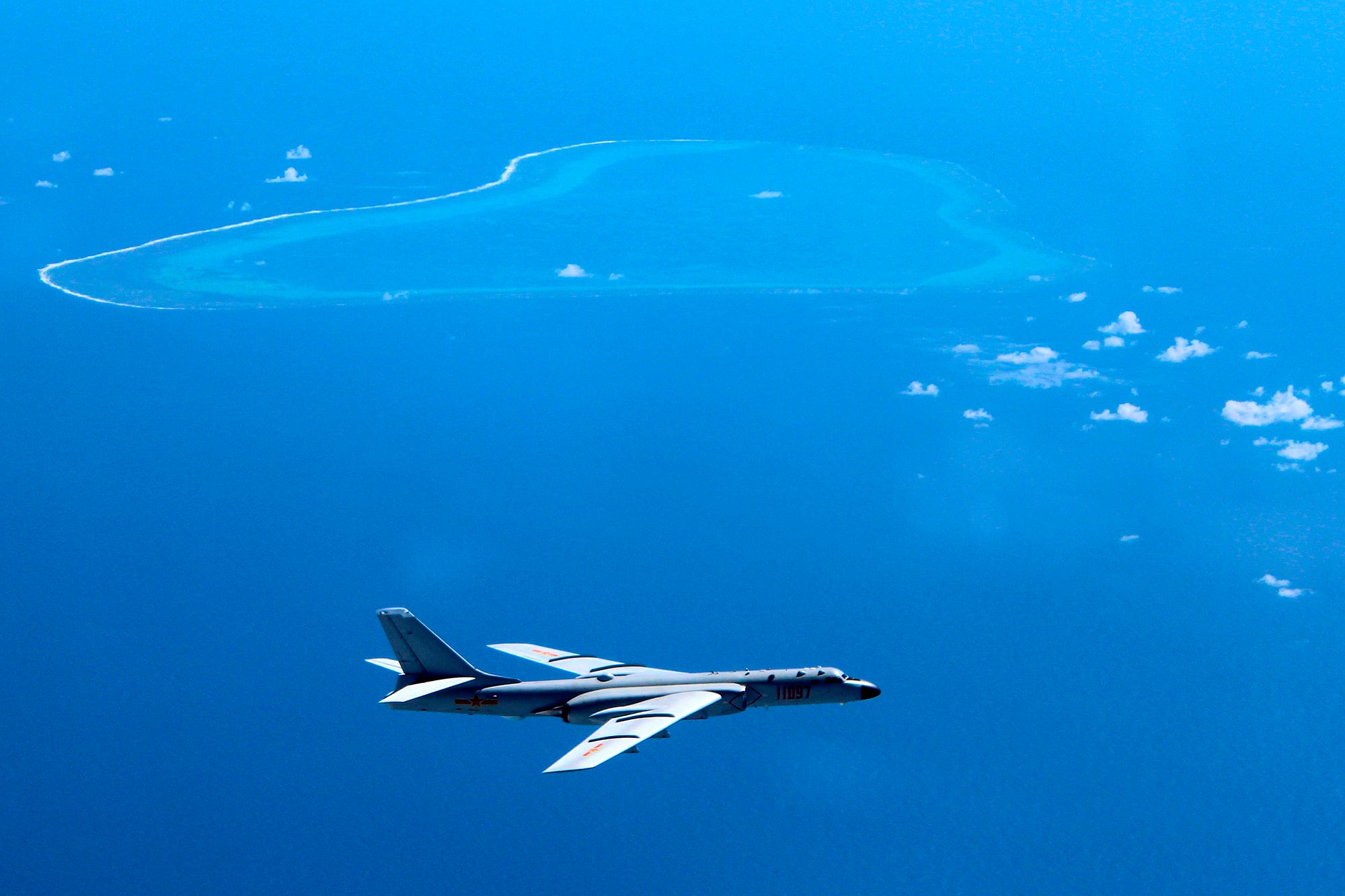
Chinese anti-access, area-denial weapons would try to hold any U.S. ships at bay, meaning an air assault might be the preferred way of getting U.S. ground troops on the island, but it is not likely they would play a major combat role.
Once the paratroopers stuff their chutes, what do they do? Mostly deal with getting noncombatants off the island. Cheng estimates that effort would comprise much of the duties of units with the 25th Infantry Division and the 82nd Airborne Division’s Globtal Response Force.
But those grunts would serve another purpose — political.
Once American boots are on the soil of Taiwan, lobbing missiles that way becomes riskier, Cheng said.
“If you continue this war, you’re going to kill Americans ― do you really want to do that?” he asked.
If a company of soldiers dies in a barrage or a planeload of paratroopers gets hit, that might mean an escalation of the war onto targets in mainland China, something neither side wants.
“Most U.S. military experts think that China wouldn’t be ready to take Taiwan by force until 2028, but I’ve heard from the Chinese military that they think they’re going to be ready in a year or two,” Oriana Skylar Mastro, a resident scholar at the American Enterprise Institute, told Military Times. “I don’t know who’s right.”
Unsurprisingly, INDOPACOM assets would take on a big chunk of responsibility, should a conflict emerge with Beijing.
“All the equipment is going to be INDOPACOM, with CENTCOM as a supporting theater,” Mastro said. “In the beginning, it would be everything we have in theater ― Korea, Japan, and then, of course, the naval assets that are out on a deployment type of thing.”
What would defeating China look like? Mastro said the ideal scenario for both parties would be a “limited, short-duration conflict” that would preserve the status quo.
That could mean no reunification between China and Taiwan, and no independence for Taiwan, she said.
“We’re going back to the status quo, the situation isn’t worse,” Mastro said. “I think that’s the kind of defeat you would want.”
Take to the sky
But maybe it wouldn’t be the sudden World War III scenario in Taiwan. Perhaps it would come more subtly, then overwhelm, much like the Russians’ work in Crimea, Georgia and Ukraine.
Former Air Force Secretary Deborah Lee James said to watch for hybrid warfare akin to the Russian “little green men” who slipped into Crimea to launch the annexation of Ukrainian territory.
“It would be fishermen, who suddenly had to be on the Senkaku Islands because their boat was sinking, and this would be the equivalent of the little green men,” James said. “And then somehow, the cyber would go down, and there would be massive confusion.”
By the time U.S. and allied political authorities cut through the confusion, figured out what had happened and decided to act, those “fishermen” would already be dug in, she said.
Former Air Combat Command head and retired Gen. Herbert “Hawk” Carlisle, current president of the National Defense Industrial Association, agreed that like Russia, China would likely operate in a “gray zone,” in which it slightly pushes and prods the U.S. and its allies until they respond.
Then things get ugly — fast.
“If we push back, and it gets to the point that it starts a conflict, it’s going to be rapid, it’s going to be intense, it’s going to be a high potential for casualties,” Carlisle said.
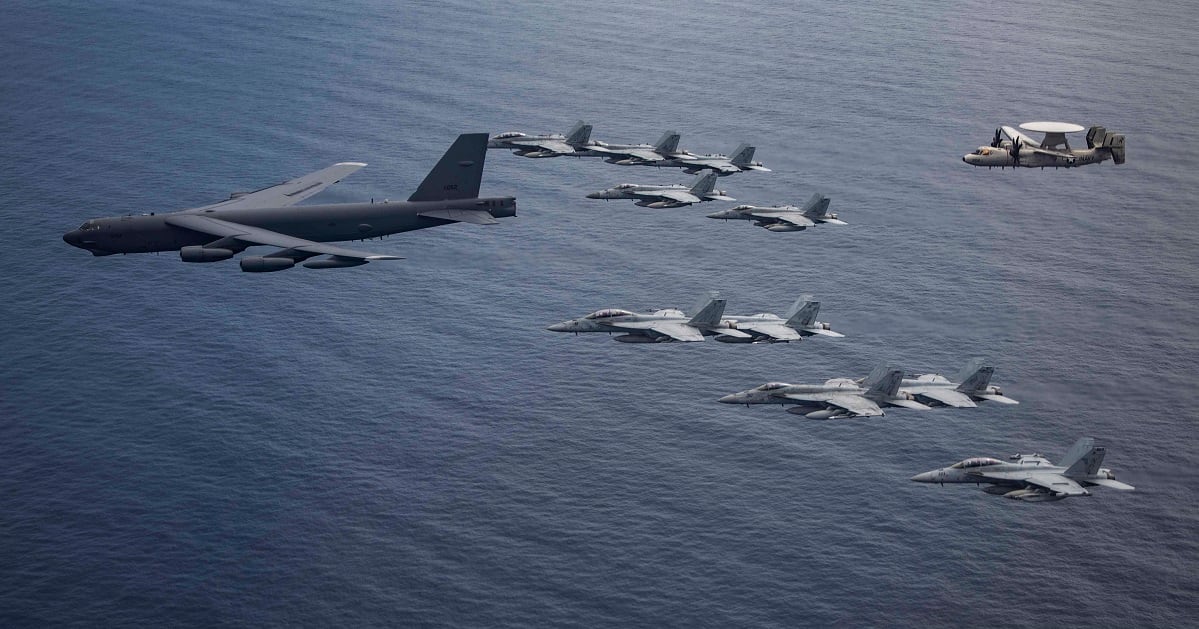
One of the Air Force’s first missions in the initial hours, James said, could be to provide intelligence, surveillance and reconnaissance capabilities — such as the RQ-4 Global Hawks that this summer rotated into Yokota, or cyber or space assets — to sus out “what the heck is going on here?”
Carlisle also said the newly created Space Force’s assets, such as orbiting satellites, would help support the other services in a China conflict.
When it comes time to strike back, the Air Force is well-positioned in the Pacific region. There are fighter jets, ISR aircraft and other assets at Japan’s Yokota and Misawa, and South Korea’s Osan and Kunsan, air bases, as well as bomber task forces rotating through Andersen Air Force Base in Guam. The naval base at Diego Garcia, in the Indian Ocean, has also periodically hosted bombers.
Carlisle said fighters, such as the F-22 and F-35, as well as the B-2, B-52 and — in the future — B-21 bombers would likely take a lead role.
Air Force aircraft in Japan — such as the F-16s of the 35th Fighter Wing at Misawa — would be most likely to respond to an invasion of the Senkaku Islands, James said, flying alongside fighters from the Koku-Jieitai, or Japanese Air Self-Defense Force. Air Force aircraft regularly train alongside the Koku-Jieitai to prepare for such joint operations.
Reinforcements would soon be needed.
Air Force bases like Whiteman and Minot would start getting their bombers ready to fly. Those bombers are typically on quick alert, to get in the air in a matter of hours. It’s a long flight to the Pacific, but James said more bombers could start arriving within a day or two.
The Air Force could also fly long-range strike missions from the continental United States, Carlisle said, and has done so in the past. In January 2017, for example, B-2s flew 34 hours from Whiteman Air Force Base in Missouri to strike Islamic State targets in Libya.
Vast amounts of airlift capability, such as C-130s and C-17s, would also be needed to bring in all the troops, weapons, equipment and supplies such a conflict would necessitate, James said. But the Air Force only has so much refueling and mobility capability, she said.
The Air Force’s fleets of bombers and advanced fighters are also limited, Carlisle said, with about 120 combat-coded F-22s, 20 B-2s, and the B-21 still years away from the battlefield. And such a fight would stretch the U.S.‘s munitions production capabilities.
On the high seas
Indications that the Chinese were readying to invade Taiwan would be observable, and allow Guam-based forces to start moving forward while United States-based support ramped up, Herzinger said.
“One of the big questions of Taiwan is if China decides to undertake such an invasion, would they open with a massive strike against U.S. forces in the region,” Herzinger, the civilian Indo-Pacific defense policy specialist, said. “I think it’s a fair assumption that they would. So, regarding 7th Fleet, who knows what’s available on day 0.”
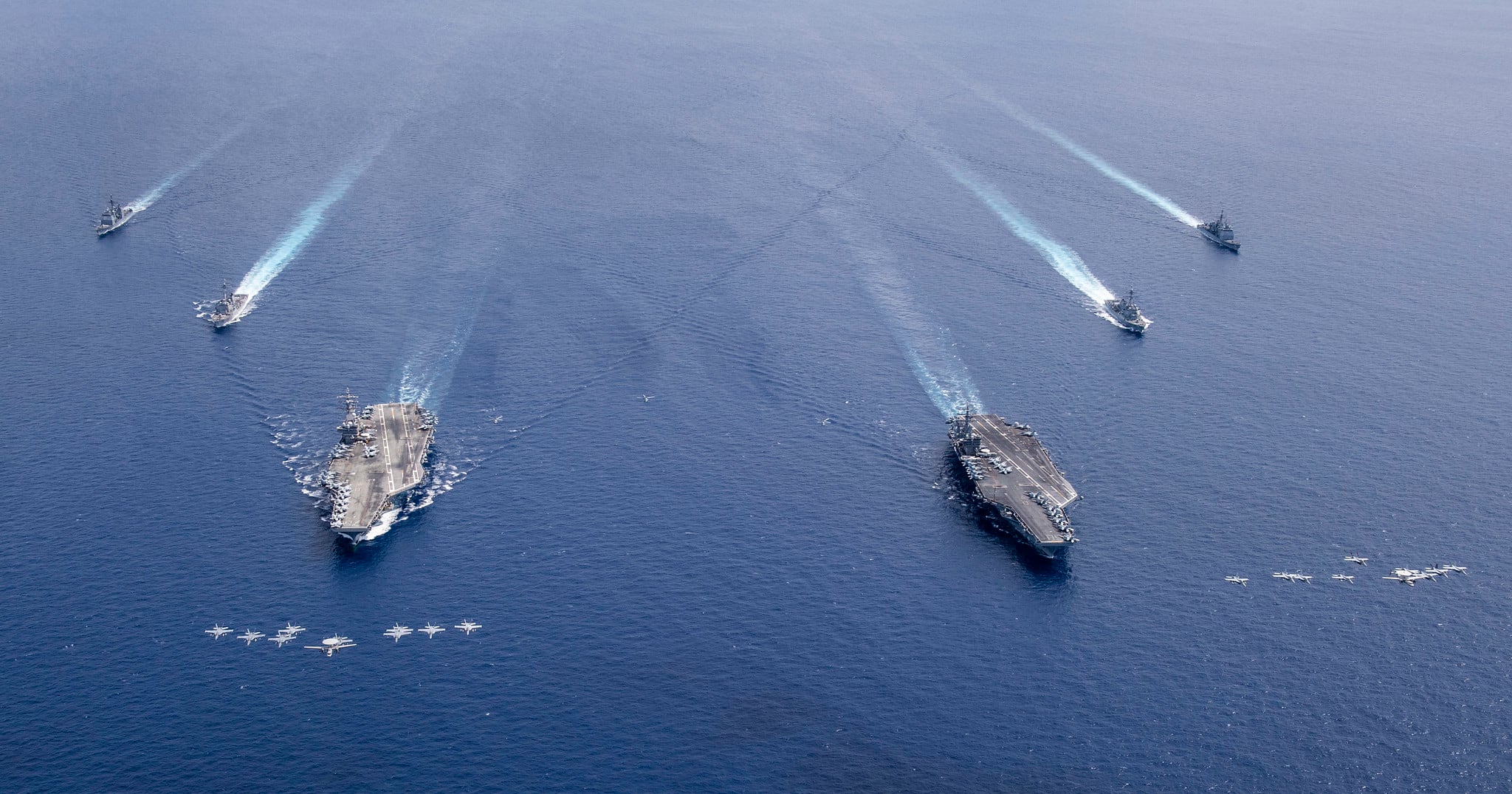
“Guam-based submarines would definitely be required,” he added. “If a no-kidding war broke out, 7th Fleet would absolutely require the full support of (San Diego-based) 3rd Fleet.”
How such a conflict would unfold in the initial hours, days and weeks would depend on how it starts, Herzinger said.
“If it’s a surprise, in-theater forces may be dealing with the aftermath of a large pre-emptive strike,” he said. “The Navy’s priorities would also be defined by the contingency. Large-scale war, the Navy needs to secure primary (maritime routes) and address the PLAN submarine force. You’d be looking at reserves getting called up and mobilized (which takes a long time, weeks and months), 3rd Fleet getting ready to surge forward, (prepositioning) ships moving. Once it’s safe to move forces into the theater, you’re looking at massive airlifts into safe bases.”

Anti-submarine warfare assets such as the sub-hunter P-8 Poseidon aircraft and American boats, as well as surface shooters and fighter jets, would be critical to any kinetic response, as would torpedoes, missiles, sonobuoys and fuel, Herzinger said.
“A number of leaders have briefed the fact that we don’t have enough [missiles], and we don’t have enough tubes to shoot them from,” he said. “As attrition bites into that force, we have even less and we don’t have land-based missiles to use (which is why you see the push for basing these in the region — despite the lack of interest from U.S. partners).”
“The generally accepted wisdom in modern naval warfare is that the first shooter has a considerable advantage because you’re reducing the number of tubes the opposition has to shoot back with,” Herzinger said. “So acquiring and fielding a lot of distributed, concealable shooters is key.”
Tell it to the Marines
The Marine Corps has spent years wargaming different scenarios, zeroing in on what it could do best in a war against China.
“I know they have done hundreds of iterations,” said Dakota Wood, a retired Marine lieutenant colonel and now a senior research fellow at The Heritage Foundation.
Marine Corps Commandant Gen. David Berger envisions a force spread out on the small islands and atolls that litter the Pacific Ocean, acting as a skirmish line within China’s weapons engagement zone, jabbing the Chinese forces, while the rest of the military prepares for the knockout blow.
“Skirmishers when deployed effectively can have a significant impact,” said Chris Dougherty, a former senior advisor to the deputy assistant defense secretary for strategy and force development, and now a senior fellow at the Center for a New American Security in Washington, D.C.

Small units of Marines on expeditionary advanced bases with a variety of tools — including unmanned aerial vehicles, surface-to-air missiles, surface-to-ship missiles and possibly even equipment to launch cyberattacks against China — could have a major impact on China’s ability to get their soldiers to the battle, Dougherty added.
However, to avoid counterattacks from the Chinese forces, Marines would have to move from island to island every few days or even every few hours.
“Signature management really does matter, you have to make it as hard as possible for the enemy to figure out where you’re at and what you’re doing,” Wood said.
If Marines were able to create and defend forward refueling and rearming bases, it could massively extend the time a Navy ship could stay in the fight.
But the commandant’s plan isn’t scheduled to be completed until 2030 and the Corps still lacks the equipment and possibly even the personnel to fully implement it.
“It would be very ugly right now, if we had this kind of war,” Wood said.
Beyond the equipment concerns, the biggest issue preventing Marines from fully committing to a dispersed fight against China is the lack of basing agreements between the U.S. and nations that would play a key role in the fight.
“It’s really hard to win a Taiwan fight without access to the Philippines,” Dougherty said. “I don’t see that reflected in the priorities of our national security community.”
The Chinese military would be able to quickly level the Marine Corps’ air bases in Japan, while Australia and Guam — places where the Marine Corps is currently operating — are too far away to be particularly helpful when it comes to launching strikes against China.
In addition to the Philippines, Dougherty cited Vietnam as a potential key partner in the fight against China “because Vietnam has some wonderful geography. You can have good exterior lines versus the Chinese.”
“If you’re in Vietnam and the Philippines, suddenly you’ve got the Chinese in the South China Sea pretty badly surrounded,” he added.
Where are the special operators?
The role of special operators in a fight against a highly advanced adversary like China would be limited at best, according to experts who spoke to Military Times.
Tier-one units are not designed to take on peer competitors, while Green Berets, as an example, are trained to work with indigenous forces to build up their capabilities and conduct unconventional warfare.
“I am not sure they would have an immediate role in one of these situations,” said retired Army Gen. Joseph Votel, describing a conflict in Taiwan or on the South China Sea.
Votel, who commanded Joint Special Operations Command, which directly oversees the special missions units, as well as U.S. Special Operations Command and U.S. Central Command, told Military Times that “certainly some SOF could be used for reconnaissance, select targeting, limited direct action and partnership.”
It is possible, he said, for U.S. SOF to assist on the ground in Taiwan.
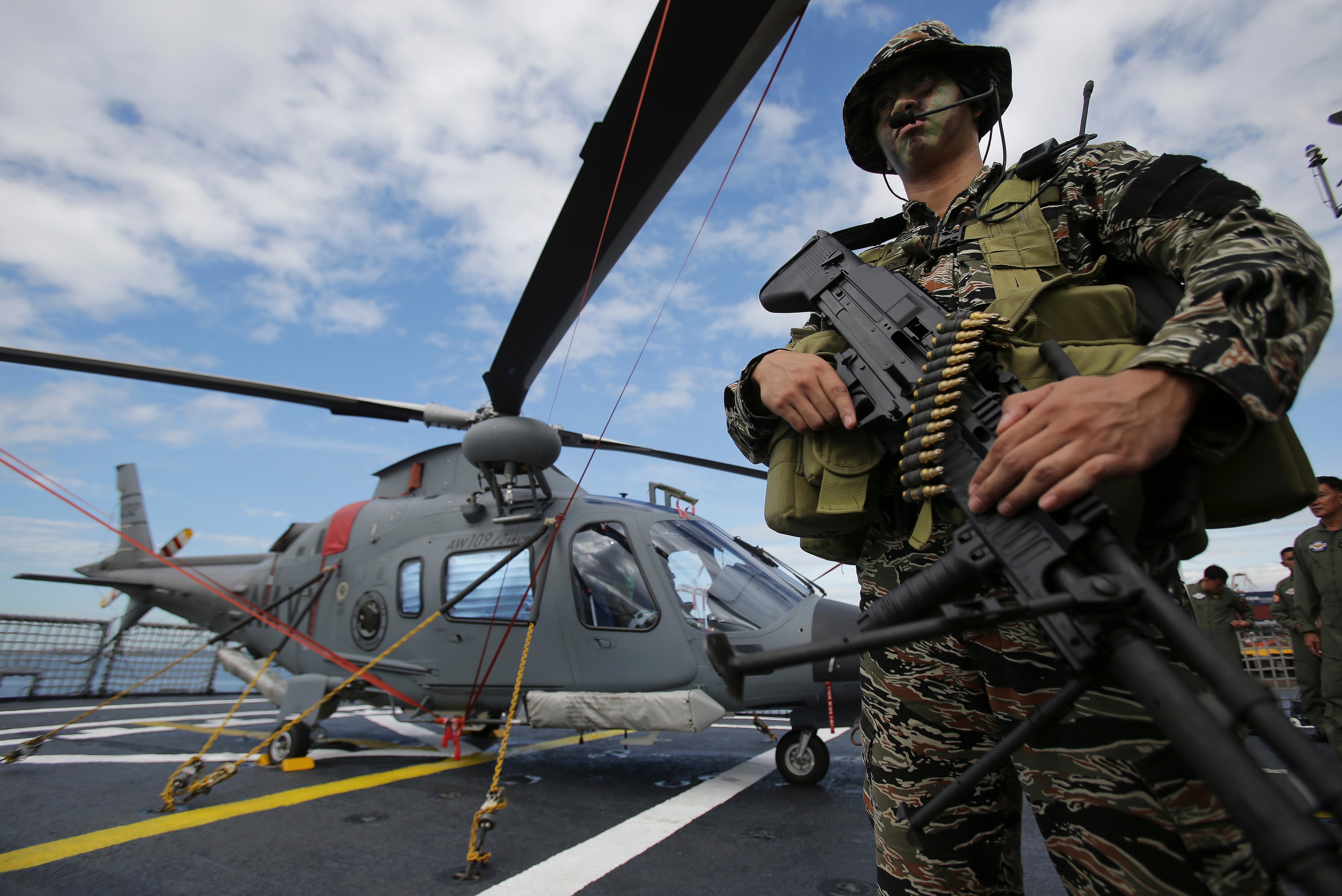
“If the Chinese attack was more subtle — meaning a less-militarily focused approach — then perhaps USSF could work with partners on the ground to create a resistance network,” he said.
In need of a lift
The sorry state of U.S. Military Sealift Command vessels worries Herzinger.
Prepositioned ships full of warfighting supplies, and the surge ships on call to ferry troops and materiel to a future fight, have been long neglected.
“It’s old, the mariners are old, and we don’t exercise them enough for high-end warfare,” Herzinger said. “They’re strapped just trying to resupply the fleet under current conditions.”
There’s also the question of access. Should a one-on-one fight break out between China and the United States, there is no guarantee that America would be allowed access to the ports and other infrastructure of nominal regional allies.
“A lot of places we’d really need are tied tightly to China economically and would be pretty reticent to allow us to use their ports/airfields/etc.,” Herzinger said. “Our anti-allies stance from the top has not helped this.”
The virtual space gets real
China is building carriers now, aiming for an offensive fleet, but they are not yet expeditionary. The Chinese lack the ability to transport assets to a foreign shore and sustain the fight, except perhaps closer to home, as with Taiwan.
That means where the Chinese military can really have an effect is in space and cyber. Cheng sees a host of attacks in the United States, both cyber and possibly kinetic, on communications sites and key linkage points.
“I see jamming, dazzling, attacks on ground facilities, including in [the contiguous United States], cyber up and down the chain,” Cheng said. “I expect, quite frankly, to see GPS go offline.”
That’s because, he added, the Chinese military sees how the American way of war is tied to space.
And China sees space holistically — not for shiny satellites, but for the data they bring back down to Earth.
All of the valuable command, control, communications and computers, as well as ISR, assets that the United States brings to the fight and enables them to fight with their allies is tied to space.
If that goes down, much of the allied force is operating in the blind.
It’s one thing for a platoon or company to have to whip out a map and compass, he said, but a brigade, a division, masses of ships attempting coordinated air and sea attacks?
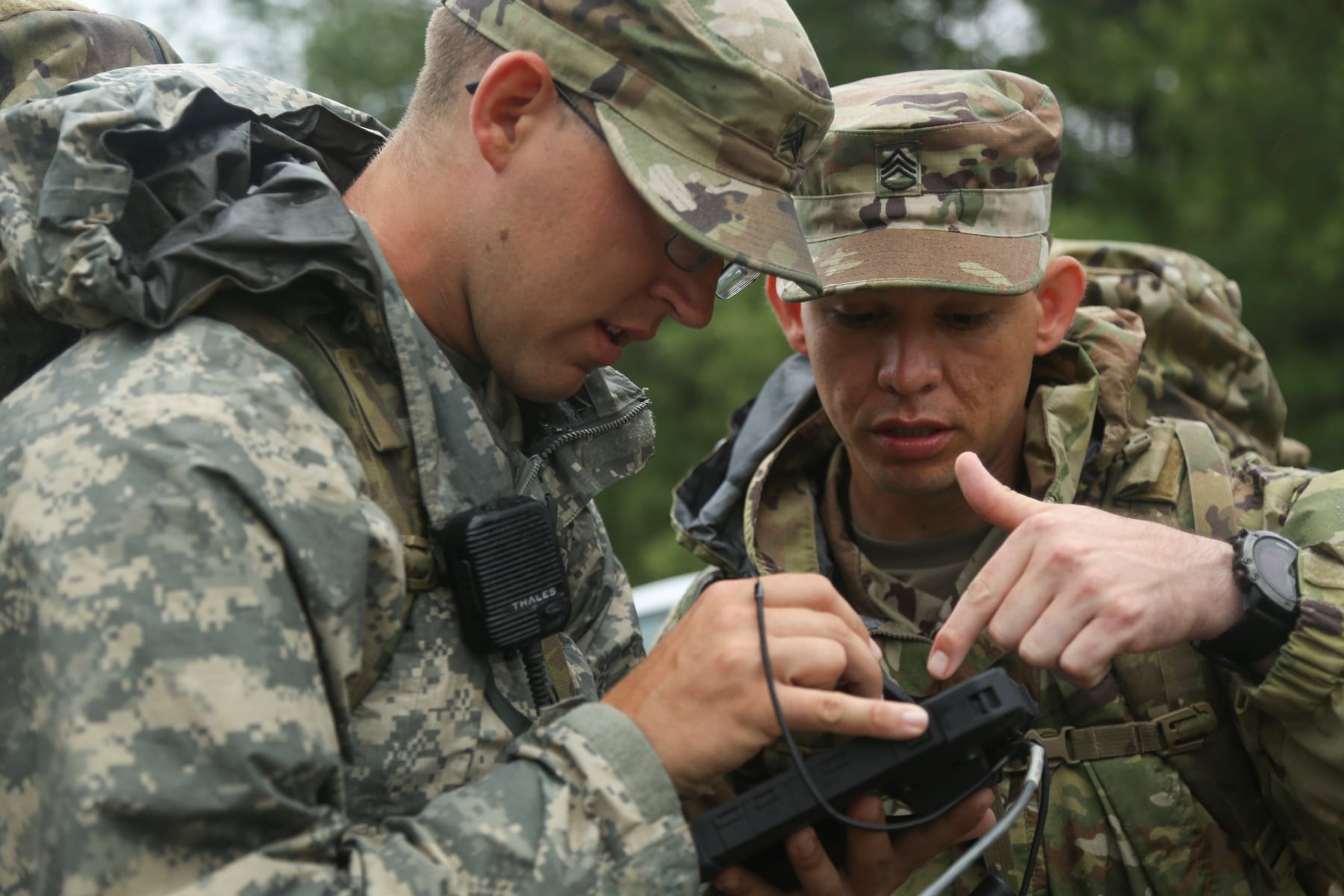
China also has some low-tech tricks to use that will help their already outsized force look bigger and better. And it starts with some rubberized items that fit in a rucksack.
Chinese soldiers can carry a 35 kg inflatable tank on their persons and have it up in five minutes or less. It can fool observers even at close distance.
But that’s plastic, you might say. Surely our sensors can defeat those decoys.
Well, there are versions of decoy units made of metal or other materials. The Chinese military has filled some with hot water to mimic engine heat for thermal sensors.
Even missile launchers are disguised to look like fuel or cargo trucks. Their military trains are built to appear just as civilian trains, making bombing train lines difficult except in a total war scenario.
Allies
This year, Japan canceled a new air defense system, Aegis Ashore, which had been in the works and was aimed to tie in with both ship- and land-based assets to protect them from either a North Korean attack or Chinese land grabs.
The South China Morning Post reported in August that Taiwan had been excluded from the massive Rim of the Pacific international maritime exercise.
Zhu Feng, a professor of international relations at Nanjing University in eastern China, told the newspaper that excluding Taiwan from RIMPAC reflected a “sensitivity” from the Pentagon to avoid potential military conflict.
“China-U.S. relations are already in a difficult situation, and neither side wants the tension to get out of control in the Western Pacific,” Zhu said. “Major powers can compete strategically, but they still want to manage risks to prevent the possibility of military conflict.”
Beijing-based naval expert Li Jie said the issue of Taiwan joining RIMPAC was one of Washington’s bargaining chips in dealing with Beijing.
“The U.S. may still invite Taiwan [next time] if they want to play the Taiwan card,” he said.
Earlier this year, INDOPACOM Commander Adm. Phil Davidson put out a release re-emphasizing U.S. agreements with Japan, the Philippines, Singapore and the island states of Palau, Micronesia and the Marshall Islands, should China come a-knocking.
Cheng notes that while much of the Pacific will be an air and sea war, for partnerships the United States must also focus on its Army. That’s because most of the Pacific nations’ armies are their military center of power and hold political sway within each state’s borders.
Lamb, the retired Army Special Forces command sergeant major, thinks any potential steel-on-steel conflict is not likely for at least another decade.
“But in 2030, when they are ready, that’s when things get really dicey unless we have a bunch of friends,” Lamb said.
That means partners — not just in the region, but also in Europe and Latin America — sharing intelligence, training and equipment in a coalition, he said.
But the bottom line, according to Lamb, is the U.S. must send China the message that there’s a limit to Beijing’s aggressive behavior.
When there are no consequences for aggression, that just “always ends with increased aggression,” he said.
Always preparing
From the Asia pivot in 2012 to now, the United States has reallocated resources — troops, rotations, deployments, equipment, infrastructure to the Pacific. The Army is designing helicopters and missile systems to reach and to defend far-flung distances it hasn’t ever had to consider.
The Navy is reorganizing its fleet to fight a true naval battle for the first time since World War II. The Air Force is taking a keen look at its drone capabilities, bombers, fuel capacity and space assets.
The Marine Corps got rid of tanks and is restructuring its force to fire and defend with missiles instead of M4s.
The Army is shifting more rotational deployments, training partnerships, even purpose-built “multi-domain operations” task forces to the Pacific to meet the challenge.
All of this is aimed at keeping China at bay. For now.
Todd South has written about crime, courts, government and the military for multiple publications since 2004 and was named a 2014 Pulitzer finalist for a co-written project on witness intimidation. Todd is a Marine veteran of the Iraq War.
Stephen Losey is the air warfare reporter for Defense News. He previously covered leadership and personnel issues at Air Force Times, and the Pentagon, special operations and air warfare at Military.com. He has traveled to the Middle East to cover U.S. Air Force operations.
Geoff is the managing editor of Military Times, but he still loves writing stories. He covered Iraq and Afghanistan extensively and was a reporter at the Chicago Tribune. He welcomes any and all kinds of tips at geoffz@militarytimes.com.
Meghann Myers is the Pentagon bureau chief at Military Times. She covers operations, policy, personnel, leadership and other issues affecting service members.
Howard Altman is an award-winning editor and reporter who was previously the military reporter for the Tampa Bay Times and before that the Tampa Tribune, where he covered USCENTCOM, USSOCOM and SOF writ large among many other topics.





